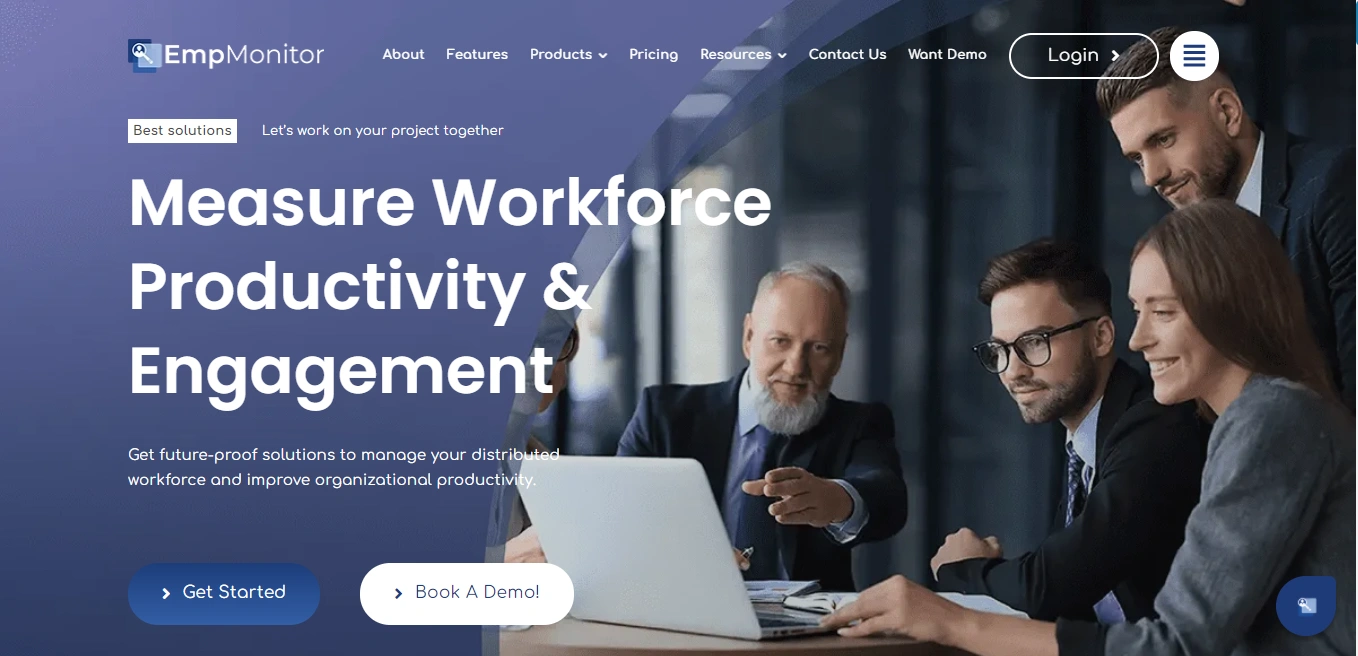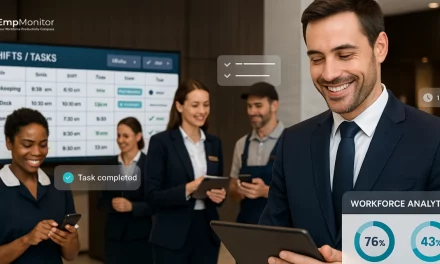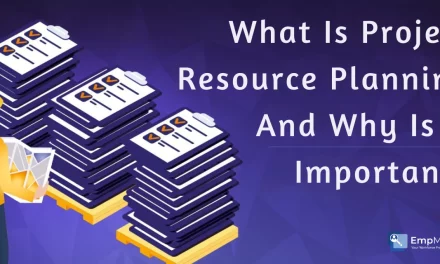Managing projects today is no easy feat, especially when the right project controls are not in place. With tight deadlines, limited budgets, and increasing stakeholder expectations, project managers need more than just experience, they need strategic systems and smart processes to keep everything running smoothly.
As projects grow more complex and involve more moving parts, the need for real-time oversight and structured management becomes even more critical.
From scheduling and budgeting to risk management and performance tracking, project controls provide the framework needed to make informed decisions, anticipate challenges, and maintain alignment with overall business objectives. Without these controls, even well-planned projects can quickly deviate from their intended course of action.
In this blog, we’ll take a closer look at the most effective Project control techniques used by high-performing teams and organizations around the world. These techniques help ensure that projects stay on track, within scope, and under budget, while also providing clarity, accountability, and adaptability throughout the project lifecycle.
Listen To The Podcast Now!
What Are Project Controls?
Before diving into the latest techniques, it’s important to understand the fundamentals of project controls. In simple terms, project control refers to the processes, tools, and methodologies used to plan, monitor, and control all aspects of a project. This includes cost estimation, budgeting, scheduling, risk management, and reporting.
What is Project Controls beyond the textbook definition? It’s the backbone of any successful project management framework. Without a solid control system in place, even the most well-planned project can falter due to unforeseen issues, scope creep, or budget overruns.
Also Read:
What are the essential things to be considered for planning the project life cycle?
Project Risk Management: The Secrets You Need To Know
Why Are Project Controls So Important?
Effective Project control is essential for the timely and cost-effective delivery of any project.
Here’s why they matter:
Forecasting And Planning:
Effective forecasting and planning are at the heart of successful project controls. By analyzing current performance data alongside historical trends, project teams can make informed predictions that lead to more accurate timelines and budgets from the very beginning.
This proactive approach not only sets realistic expectations but also ensures resources are allocated wisely, helping to minimize delays and prevent cost overruns.
Risk Mitigation:
Identifying potential risks early in the project lifecycle is essential for avoiding major setbacks, and project controls make this possible. By enabling thorough risk assessments and supporting the development of targeted mitigation strategies, teams can proactively address issues before they grow.
This structured approach significantly reduces the impact of unforeseen problems, helping the project stay on a steady and successful path.
Performance Monitoring:
Continuous tracking through project controls ensures work stays aligned with objectives. It allows managers to spot deviations in schedule, cost, or scope before they escalate. Regular monitoring supports accountability and helps maintain overall project health.
Informed Decision Making:
Access to accurate, real-time data empowers decision-makers to act quickly and confidently as the project evolves. Rather than relying on assumptions or outdated reports, project controls offer clear, up-to-date insights into performance and progress.
This level of visibility eliminates guesswork and fosters more strategic, data-driven decisions at every stage of the project lifecycle.
When executed well, Project control minimizes uncertainties and significantly enhances project predictability.
What Are The Key Elements Of Project Controls?
Effective Project control consists of several interrelated elements, each playing a critical role:
Cost Control:
Cost control is a fundamental aspect of project management that ensures a project remains within its approved budget. It starts with the creation of a realistic budget based on the project’s scope, resources, and timeline.
Once the project is underway, continuous cost tracking helps monitor actual spending against planned expenditures. Through variance analysis, project managers can quickly identify any discrepancies, understand their causes, and take corrective actions to prevent budget overruns.
Schedule Control:
Schedule control ensures that a project is delivered on time by developing a detailed and achievable project timeline. This involves outlining tasks, defining milestones, and assigning deadlines to each phase of the project.
As the project progresses, schedule control helps track these milestones and identify any delays or deviations. If issues arise, adjustments can be made to the plan to bring the project back on track and avoid missed deadlines.
Risk Management:
Risk management is all about foreseeing potential issues and preparing for them before they disrupt the project. It involves identifying possible risks early on, evaluating their probability and potential impact, and prioritizing them accordingly.
Once risks are assessed, mitigation strategies are developed and implemented to either eliminate the risks or reduce their effects, ensuring smoother project execution.
Change Management:
Projects often face changes in scope, resources, or timelines, and managing these changes effectively is crucial for maintaining control. Change management involves a structured process of documenting, evaluating, and approving any project modifications.
This ensures that all changes are assessed for impact and integrated into the plan with minimal disruption, maintaining clarity and accountability throughout the team.
Reporting And Communication:
Effective reporting and communication are vital for keeping all stakeholders aligned and informed. Regular progress reports provide insights into project status, performance metrics, and any emerging issues, fostering transparency.
In addition, consistent communication helps manage expectations, supports collaboration, and ensures that decision-makers have the information they need to guide the project toward success.
Each element reinforces the others, creating a comprehensive framework that supports project success.
What Are The Most Effective Project Control Techniques That Work?
Numerous project control techniques are used by project managers today to ensure smooth execution and successful project delivery. Some of the most effective and widely adopted techniques include:
-
Earned Value Management (EVM):
EVM is a powerful method that integrates scope, schedule, and cost to provide a comprehensive view of project performance. It measures the value of work completed against the planned work and budget, helping identify variances early. This technique enables project managers to forecast future performance and take corrective actions as needed.
-
Critical Path Method (CPM):
CPM helps identify the longest sequence of dependent tasks in a project, which directly impacts the total project duration. By focusing on these critical tasks, managers can prioritize resources and monitor activities that influence the project’s finish date. It is invaluable for understanding task dependencies and managing schedule risks.
-
Gantt Charts:
Gantt charts are visual scheduling tools that display project tasks along a timeline, making it easy to track progress and deadlines. They help teams understand task sequences, overlapping activities, and milestones at a glance. This clarity improves communication and coordination among team members and stakeholders.
-
Variance Analysis:
Variance analysis compares planned outcomes, such as costs or timelines, against actual results to identify deviations. By examining these variances, project managers can understand where the project is off track and investigate root causes. This insight allows for timely adjustments to keep the project aligned with its objectives.
-
Trend Analysis:
Trend analysis involves monitoring performance data over time to detect patterns or shifts that may affect the project. This proactive technique helps predict potential future issues or successes based on past behavior. By recognizing trends early, teams can implement strategies to mitigate risks or capitalize on positive momentum.
When used together and supported by modern project management tools, these techniques significantly improve the effectiveness and reliability of project controls, helping teams deliver projects on time and within budget.
The Role Of Project Monitoring And Control Techniques
To ensure a project stays on track, implementing project monitoring and control techniques is essential. These include:
- Status Reviews: Regular meetings to evaluate progress and identify bottlenecks.
- KPI Tracking: Monitoring key performance indicators related to scope, time, and cost.
- Risk Audits: Ongoing assessment of identified risks and their impact.
- Quality Reviews: Ensuring that deliverables meet the required standards.
These techniques offer real-time insights and facilitate quick interventions when deviations occur, enhancing the overall effectiveness of project controls.
Basics Of Project Control Management
Project control management is a vital part of project management focused on making sure projects achieve their objectives efficiently. It starts with establishing baselines, which are the agreed-upon standards for cost, schedule, and scope that serve as benchmarks to measure project progress.
Once baselines are set, the project’s performance is continuously tracked against them. This ongoing monitoring helps identify any deviations or issues early on. When discrepancies arise, project control management requires timely corrective actions to realign the project with its goals, minimizing delays and cost overruns.
Equally important is communication. Keeping all stakeholders informed with accurate and timely updates ensures transparency and supports informed decision-making. Typically, a dedicated team or individual oversees project control management, integrating control activities systematically throughout the project lifecycle to maintain steady progress and increase the likelihood of successful project completion.
Challenges In Project Controls
Despite their importance, implementing Project control comes with several challenges.
- Data Accuracy:
Accurate and reliable data is crucial for effective project controls. Inaccurate or incomplete data can mislead decision-makers, resulting in poor judgments and project setbacks. - Resource Constraints:
Limited availability of skilled staff or appropriate tools can restrict the ability to properly implement and maintain Project control. Without sufficient resources, control processes may become inconsistent or ineffective. - Resistance to Change:
Project teams and stakeholders may resist adopting new control methods or technologies due to comfort with existing practices or fear of additional workload. This resistance can slow down implementation and reduce the effectiveness of controls. - Integration Issues:
Aligning various project control elements like scheduling, budgeting, and reporting into a cohesive system can be complex. Poor integration can lead to gaps in oversight and miscommunication among teams.
Overcoming these challenges requires strong leadership commitment, ongoing training, and investing in robust project control tools to ensure smooth and successful implementation.
Also Read:
What You Need To Know About Lead In Project Management
How Does Project Management Software Help In Project Controls?
Modern project management software has revolutionized the way project controls are executed. These tools offer:
- Real-Time Data: Instant updates for better decision-making.
- Automation: Reduces manual work and errors.
- Customization: Tailor dashboards and reports to project needs.
- Collaboration Tools: Enhances team communication and document sharing.
Advanced tools like agile project management software offer dynamic capabilities like sprint planning, burndown charts, and backlog grooming, making them ideal for fast-paced environments. For resource tracking, workforce management software integrates scheduling, attendance, and productivity metrics, further strengthening project controls.
One highly recommended tool in this domain is EmpMonitor, an all-in-one employee monitoring and productivity tracking solution. It simplifies project control by offering deep visibility into employee activities and ensuring accountability at every step.
How Does EmpMonitor Empower Project Controls With Precision?
EmpMonitor is a comprehensive employee monitoring and productivity management tool designed to give businesses complete visibility into team activities, whether in-office or remote. By combining real-time tracking, time management, and detailed analytics, EmpMonitor enables precise and efficient project control, ensuring teams stay aligned, productive, and accountable.
-
Project Management Software:
EmpMonitor’s integrated project management solution helps teams streamline task management, track progress, and meet deadlines with greater accuracy. With features like centralized dashboards, custom workflows, real-time updates, and smart analytics, it simplifies collaboration and boosts delivery efficiency. Trusted by teams managing over 100K+ projects and completing 10 M+ tasks, EmpMonitor empowers growing businesses to stay in control and scale with confidence.
-
Employee Monitoring Software:
EmpMonitor offers powerful employee monitoring features that help track distributed workforce activity in real time. It provides detailed insights into daily and hourly productivity, allowing managers to make informed decisions. The tool enhances team performance by promoting accountability and transparency.
-
Time-Tracking:
With advanced time-tracking capabilities, EmpMonitor records working hours, helping identify productive and idle periods. It generates automated timesheets that reflect real-time activity stats for accurate performance assessment. This feature aids in improving individual and team time management.
-
Attendance Monitoring:
The tool simplifies attendance and leave management with automated, paperless tracking systems. A centralized dashboard offers clear insights into employee attendance patterns and records. It ensures data accuracy and compliance while saving HR teams time and effort.
-
Workforce Productivity & Engagement:
EmpMonitor equips businesses with tools to monitor productivity and foster employee engagement. It offers in-depth reports on task performance, project tracking, and HR operations. These insights help organizations boost operational efficiency and workforce satisfaction.
-
Live Screen Monitoring:
Admins can monitor all employees’ screens live from a unified control panel. This allows for immediate visibility into what employees are working on at any moment. It’s an effective way to maintain workplace discipline and support active engagement.
With its all-in-one capabilities, EmpMonitor not only strengthens project control but also empowers teams to work smarter, stay accountable, and achieve consistent results, making it an essential tool for modern, growth-driven organizations.
Future Trends In Project Controls
As technology evolves, so does Project control. Emerging trends include:
- Artificial Intelligence: Predictive analytics for risk and cost forecasting.
- Machine Learning: Continuous improvement of planning models.
- Cloud-Based Solutions: Enhanced accessibility and scalability.
- Integrated Platforms: Unified tools that cover all aspects of project control.
These trends are set to redefine how Project control is implemented, making it more intelligent, efficient, and adaptive.
Final Thoughts
Mastering project controls is essential for ensuring projects stay on track and meet their goals. From classic methods like Earned Value Management to modern software solutions, there are plenty of effective tools to choose from. Understanding the core elements, applying the right techniques, and using platforms like EmpMonitor can make a real difference in how smoothly your projects run.
Whether you’re just starting or fine-tuning your current approach, strong project controls are key to achieving consistent and successful outcomes.
FAQs
1. What certifications or training are recommended for professionals in project controls?
Ans. Professionals in project controls can benefit from certifications such as PMP (Project Management Professional), CCP (Certified Cost Professional), and PSP (Planning & Scheduling Professional). Training in tools like Primavera P6, Microsoft Project, and Deltek Cobra is also valuable for hands-on skills in scheduling, budgeting, and cost control. These credentials enhance credibility, deepen technical knowledge, and improve job prospects in the field.
2. How can project controls be adapted for agile or hybrid project methodologies?
Ans. Project controls in agile or hybrid environments focus on flexibility, using short feedback loops, real-time metrics, and iterative planning to track progress, manage scope, and adjust quickly to change.
3. What qualifications or certifications are recommended for professionals in Project control?
Ans. Certifications like CCP, PMP, and PMI-SP, along with training in tools like Primavera and MS Project, are valuable for building expertise in project control.
















